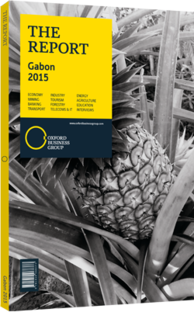Prime Minister Daniel Ona Ondo: Interview

Interview: Daniela Ona Ondo
How can diversification efforts be accelerated?
DANIELA ONA ONDO: In recent years, Gabon’s guiding policy for economic and social development has been centred around the Emerging Gabon Strategic Plan, which was passed in 2010 and emphasises diversification. The plan has paid off: in the 2012-14 period the Gabonese economy posted average growth of 5.3%, while inflation was contained to an average of 1.8%. The economy is expected to post higher growth of 7.2% in the course of the 2015-17 period, driven by sectors outside the oil and gas industry.
For example, the construction and public works sector is expected to be the main driver of GDP growth, with an estimated expansion of about 11.7% for that period. The electricity and water sector, along with the transportation and communications sector, will likely come next, with a projected rate of expansion of approximately 10.8%. Finally, services should also serve as an economic engine, with growth expected to reach 9%. The ongoing dynamism of these sectors – and consequently, the broader economy – is a direct consequence of administrative reforms carried out since 2010 in line with the Emerging Gabon Strategic Plan.
The economic diversification that the Emerging Gabon Strategic Plan plan seeks to encourage follows two axes: the first aims to spur industrialisation by encouraging the development of local processing activities, especially for raw materials and commodities – including oil, gas, minerals and agriculture. The second axis aims to improve Gabon’s openness to the world by facilitating foreign direct investment and liberalisation. Ultimately, we have sought to prioritise the development of our non-hydrocarbon sectors. It is worth highlighting that Gabon’s strategy of industrialisation, for example, relies on the development of the wood industry – a result of the fact that 85% of Gabon’s territory is covered by rainforest, presenting a serious opportunity for us to increase local processing. Doing so will not only reduce dependency on the oil and gas sector, but also combat poverty and improve living conditions for the population.
Efforts to support these initiatives have met with success. For example, the ban on timber exports in 2010 encouraged the creation of 33 companies specialising in wood processing between 2010 and 2012, and as a result, wood sales have more than doubled, from $166m in 2009 to $340m in 2012, while creating some 3173 direct jobs.
How can regional integration be improved?
ONDO: Today, the execution and enforcement of the Regional Economic Programme (REP) for CEMAC, which drives the regional integration policy, is limited, but it should improve shortly as a new programme aimed at reinforcing its capacities has been put in place. Since its inception, the programme has included four phases of development, covering legislative, executive, enforcement and compliance reforms. The starting phase of the REP was initiated in 2009 and was followed by the initial launch phase, between 2010 and 2011. The reinforcement portion of the programme took place in the 2012-13 period, with the full implementation phase now in force since 2014 and set to continue until late 2015.
In order to successfully realise the broader targets of the REP and to address the issues that have arisen in its various phases, five major axes have been identified: ensuring a shared vision; maintaining good governance practices and a conducive business environment; improving physical integration and land planning; developing human capital; and establishing a common market. These represent the roadmap of CEMAC through 2025 and guide the restructuring of the sub-regional economy. The application of the recommendations that are highlighted under each of these strategic axes will enable for us to foster a
You have reached the limit of premium articles you can view for free.
Choose from the options below to purchase print or digital editions of our Reports. You can also purchase a website subscription giving you unlimited access to all of our Reports online for 12 months.
If you have already purchased this Report or have a website subscription, please login to continue.

